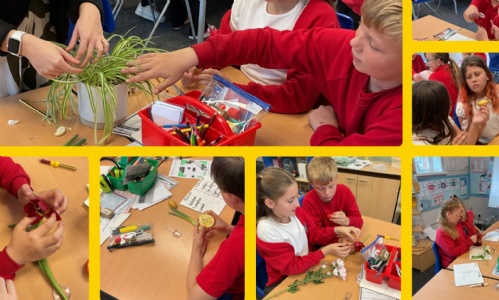Plant Reproduction

In our final lesson of the Living Things and Their Habitats topic, the children explored the fascinating world of plant reproduction. We began by recapping the key differences between sexual and asexual reproduction in plants. The class discussed how sexual reproduction involves the joining of male and female gametes, often resulting in seeds, while asexual reproduction produces new plants without seeds, using parts such as stems, roots, or leaves.
The children then took part in a hands-on investigation, examining a variety of flowers, fruits, vegetables, and other plants. Working in small groups, they observed each specimen closely and discussed whether it reproduced sexually or asexually, giving thoughtful reasons for their conclusions. It was wonderful to see their scientific thinking and teamwork in action!
